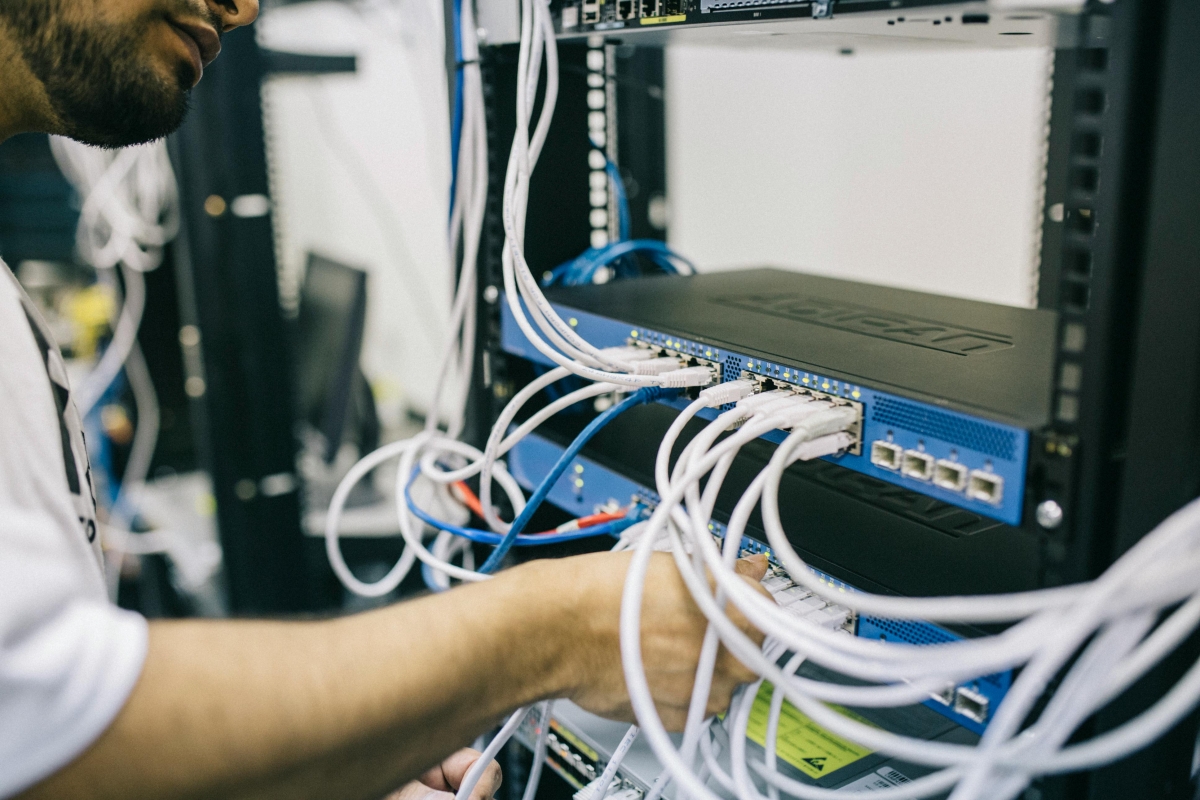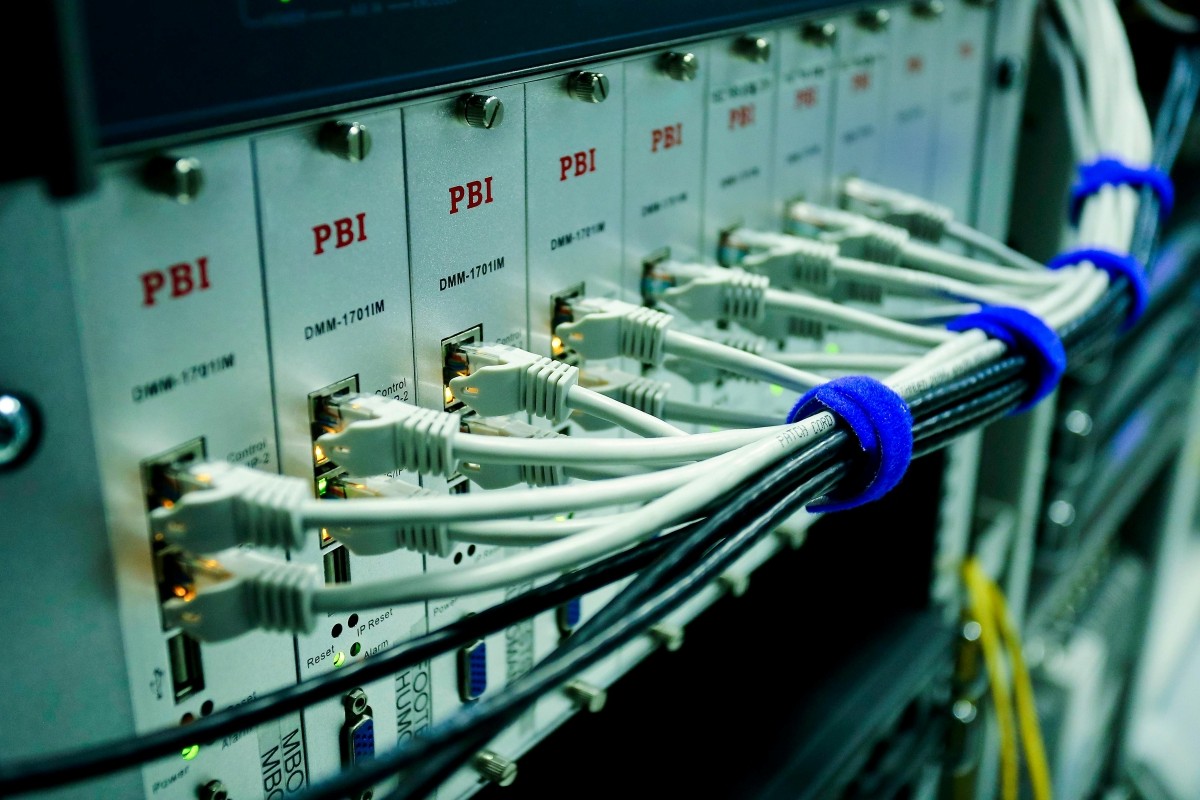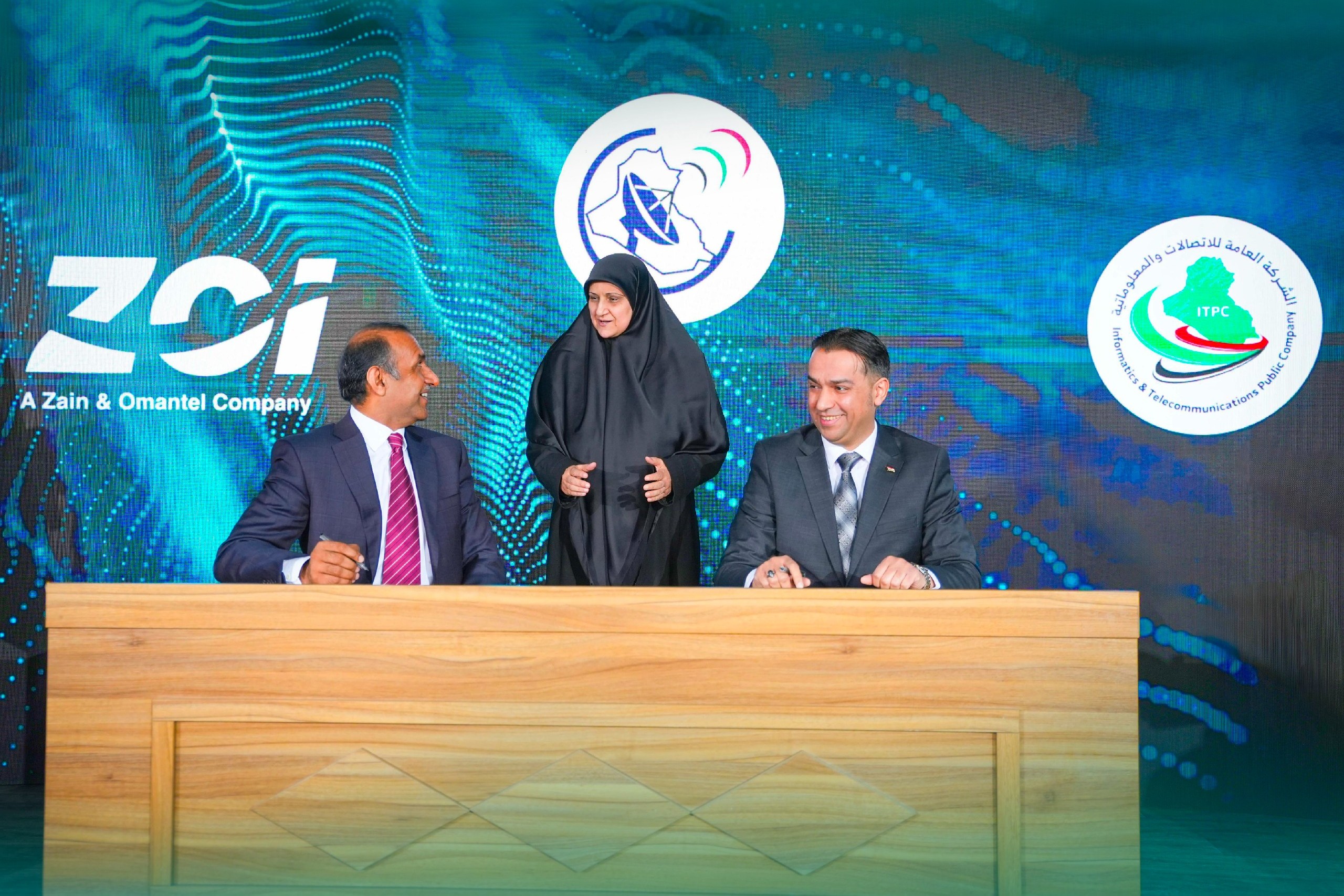Enterprise Network Infrastructure: Design, Performance & Security
Data Centre Operations: Optimising Infrastructure for Performance and Reliability
Enterprise Network Infrastructure: Design, Performance & Security
News in Cloud Computing & Data Storage
AMD processors now power Nokia cloud infrastructure
AMD, an American multinational semiconductor company specialising in computer processors and graphics cards, has announced that Nokia has included 5th Gen AMD EPYC processors to power the Nokia Cloud Platform.
“Telecom operators are looking for infrastructure solutions that combine performance, scalability, and power efficiency to manage the growing complexity and scale of 5G networks,” says Dan McNamara, Senior Vice President and General Manager, Server Business, AMD. “Working together with Nokia, we’re using the leadership performance and energy efficiency of the 5th Gen AMD EPYC processors to help our customers build and operate high-performance and efficient networks.”
“This expanded collaboration between Nokia and AMD brings a multitude of benefits and underscores Nokia's commitment to innovation through diverse chip partnerships in 5G network infrastructure. The new 5th Gen AMD EPYC processors offer high performance and impressive energy efficiency, enabling Nokia to meet the demanding needs of its 5G customers while contributing to the industry's sustainability goals,” adds Kal De, Senior Vice President, Product and Engineering, Cloud and Network Services, Nokia.
The processors will be deployed within Nokia Cloud Platform, a component that supports containerised workloads foundational to 5G core, edge, and enterprise applications. By integrating the AMD EPYC 9005 Series processors into Nokia Cloud Platform, Nokia hopes to deliver good performance per watt and meet growing data demands whilst minimising environmental impact.
For more from AMD, click here.
Joe Peck - 12 June 2025
Artificial Intelligence in Data Centre Operations
Data Centre Operations: Optimising Infrastructure for Performance and Reliability
Enterprise Network Infrastructure: Design, Performance & Security
News
Ciena publishes report on wave services demand
Ciena, an American networking systems and software company specialising in optical networking equipment, has compiled a new report on wavelength services that explores the key drivers of the need for high-speed connectivity. The report examines the critical role of wave services in enabling the expansion of interconnected data centres driven by artificial intelligence (AI), the growing importance of low latency and data sovereignty for AI workloads, and the build-out of terrestrial and critical submarine network infrastructure. It also highlights the pivotal role of managed optical fibre network (MOFN) business models to expand high-speed connectivity into new geographies and markets.
“As cloud providers scale data centre networks to address AI performance requirements, wave services must also evolve in terms of capacity, coverage, latency, and route diversity,” says Mark Bieberich, Vice President of Portfolio Marketing, Ciena. “Demand for wave services is growing steadily worldwide as data centre network expansion requires increasingly high-capacity interconnection among various types of network operators and end users.”
The total wave services circuits market in the US grew nearly 8% in 2024 and is projected to grow steadily through 2029, based on research from Vertical Systems Group. It observed an increasing use of wave services for cloud on-ramps, which is demonstrated by the metro geographical scope (41%) along with the dominance of retail customers (58%).
The report states that, from 2024 to 2029, growth in 400G circuits is set to soar, while 100G circuits will see a steady rise and 10G circuits will experience modest growth.
Wave services are the foundation of most high-capacity networks, particularly when connectivity to or between data centres is involved. High bandwidth, protocol transparency, and low latency are some of their fundamental characteristics. Wave services can either act as end services or support higher-layer services. Based on Dense Wavelength Division Multiplexing (DWDM) technology, they enable massive data-transmission bandwidth over a fibre pair. Currently, wave services are dominated by 100G and 400G connections. There is still a high volume of 10G services deployed, but they are being upgraded to 100G at a steady pace.
Ciena’s report also looks at the growth of submarine cables. It highlights that a record 161,100km of submarine cables are planned to become ready for service (RFS) in 2025, dwarfing the previous high of 121,000km becoming RFS back in 2001.
“With infrastructure expanding rapidly and resource constraints increasingly shaping growth, anticipating demand has never been more important,” continues Mark. “Network operators providing wave services can seize this moment by proactively routing new submarine cables to emerging data centres and innovating to address these challenges. Differentiation through greater route diversity, low-latency connectivity, and compelling managed services is key to staying ahead.”
The report provides an analysis of the current industry landscape, evaluating key trends and identifying factors poised to influence the market in the coming years.
Joe Peck - 12 June 2025
Enterprise Network Infrastructure: Design, Performance & Security
News
LINX board election results revealed
The London Internet Exchange (LINX), operating one of the world's largest internet exchange points, facilitating traffic exchange between internet service providers (ISPs) and content networks, has announced the results of its 2025 board election, held during the Annual General Meeting (AGM) on 2 June in London.
This year, two board positions were up for election. Incumbent members Neil McRae and Pete Stevens stood for re-election, while Paul Dunbar (Akamai) and Nico Walters (CMC Networks) were nominated as new candidates.
Following the election, Neil McRae and Pete Stevens were re-elected to serve a new three-year term on the LINX board.
Neil McRae has been involved with LINX since its birth back in 1994 and has served as a LINX board member for many years. He comments, “For me, being part of LINX is not just professional—it’s deeply personal. I believe that connectivity is a powerful equaliser that opens doors to opportunity, and I speak from personal experience, having built my career through self-taught skills and a relentless drive to learn and contribute. LINX is a crucial platform in enabling its members to connect people.”
Pete Stevens is an active member of the LINX community and is also grateful to be re-elected. He adds, “I’m thrilled with what has been achieved during my time on the LINX board. I’ve become Vice Chair of the board and the Chair of the Finance, Risk, and Audit subcommittee. During my tenure on the board, we’ve appointed a new CEO, CFO, and changed our auditors to RSM. We’ve opened multiple internet exchanges around the world and now have five exchanges regularly pushing over half a terabit of traffic—one of which is less than twelve months old. I have also served on the governance committee which has now completed revising all the founding documents of LINX. This is a necessary development to place LINX on a firm legal footing for the future whilst still protecting member interests.”
The LINX board plays a crucial role in guiding the strategic direction and governance of the organisation, aiming to ensure it meets the evolving needs of its membership and the broader internet community.
Jennifer Holmes, CEO of LINX, says, “We’d like to thank all the candidates for standing for election. The voting this year was quite competitive, which reflects the strong interest in LINX as a membership-run organisation within the membership. I'd like to thank Neil and Pete for their dedication to the role so far and congratulate them on their re-election. LINX holds board elections every year so I look forward to welcoming more candidates into the process next year."
For more from LINX, click here.
Joe Peck - 10 June 2025
Data Centres
Enterprise Network Infrastructure: Design, Performance & Security
News
EUDCA’s research affirms critical importance of data centres
The European Data Centre Association (EUDCA), a trade body representing data centre operators, suppliers, and stakeholders across Europe, has announced the publication of its inaugural State of European Data Centres report, in collaboration with European National Trade Associations (NTAs). The new report marks an important step in documenting and recording the state of the industry, allowing greater ongoing analysis and insights, tracking progress and development, and reflecting a vibrant industry that while experiencing challenges, has potential to be at the heart of a digital Europe.
Michael Winterson, Secretary General of the EUDCA, says, “Europe’s digital economies could not have been established without the backbone of data centres that provide digital sovereignty while contributing significantly to GDP. The State of European Data Centres 2025 provides a benchmark of this vital industry and a reference point for informed, data-driven decision-making as we continue building Europe’s digital future.”
According to the report, the data centre industry contributes significantly to Europe’s socio-economic landscape. Colocation data centres alone were responsible for €30 billion in GDP in 2023, expected to reach €83.8 billion by 2030, with the creation of thousands of direct and indirect jobs.
The market is expanding rapidly, driven by artificial intelligence (AI) and digital service growth, with demand outstripping supply and attracting billions of euros in investment. Major centres of activity include Frankfurt, London, Amsterdam, Paris, and Dublin (FLAPD), with intense activity in emerging hubs in the Nordics and Southern Europe. Additionally, new metropolitan hubs are emerging in and around cities such as Barcelona, Rome, and Athens.
“A key implication from the report,” continues Michael, “is the need for data centres, as large energy consumers, to become flexible energy partners to grid providers.”
Sustainability data shows that more than a quarter (28%) of operators have invested in on-site renewable energy generation capability, and 41% plan to do so. In support of these efforts, 28% are planning on installing battery energy storage systems (BESS) within the next two years.
Currently, nearly a quarter (22%) of data centre operators provide grid stabilisation or energy trading capacity to energy grids, greatly facilitating further utilisation of renewable energy sources (RES). This will almost triple (59%) in the next two years. All of this means that data centre operators, through increased resilience and energy independence, can engage with grid operators to relieve stress on grids, while providing supports such as grid stabilisation services.
The report finds the industry faces challenges related to power availability, sustainability, and regulatory compliance as new reporting obligations recently came into effect. More than a third (36%) said that regulatory compliance will be a challenge over the next three years.
However, these challenges also present opportunities for innovation in energy efficiency, flexibility, and heat reuse. The sector's continued growth will necessitate ongoing investments in sustainability to minimise environmental impact.
Another bright spot is improvement in water usage. Of those operators who reported water usage effectiveness (WUE), the average was 0.31 litre per kWh for 2023, well below the Climate Neutral Data Centre Pact (CNDCP) target of 0.4 l/kWh for water-stressed areas.
The industry is also advancing technologies such as liquid cooling and heat reuse to improve efficiency and reduce its environmental footprint. Currently, half of operators have residual heat coupling capability, with a further 38% expected in two years. Already, three quarters of operators have energy or environmental management systems in place.
The data centre industry also faces significant challenges, including power supply constraints, permitting delays, and a growing skills gap in technical fields. More than 75% of survey respondents consider access to power as the biggest challenge for the sector in the next three years, despite a willingness to invest in alternative solutions to access power. Energy costs are also a concern, as rising wholesale prices impact operators.
The additional responsibility of regulatory compliance was also significant, with more than a third (36%) citing it as a major challenge in the near future. There are significant concerns that duplication and redundancy in reporting frameworks will deter compliance, reducing effectiveness and frustrating regulatory goals.
For more from the EUDCA, click here.
Joe Peck - 4 June 2025
Cabling Solutions for Optimised Data Centre Performance
Enterprise Network Infrastructure: Design, Performance & Security
Zayo Europe delivers Pan-European network to GNM
Zayo Europe, a Pan-European fibre infrastructure owner and operator, has today announced the delivery of a 100G wavelength network for fellow infrastructure provider GNM in five working days.
The diverse network was built on Zayo Europe’s 800G-ready infrastructure, creating a low-latency route with the intention to enhance GNM’s European backbone and expand its presence in key regions. GNM supports a number of international clients, including Google, Vodafone, Telegram, and Roblox, which rely on stable and secure infrastructure across the continent.
Alex Surkov, Head of Development at GNM, says, “Our focus is on constantly improving the diversity of our networks for our Pan-European client-base. This is exactly what this project with Zayo Europe does. Since our networks operate in different regions, we see strong potential to complement each other’s coverage and will work closely to explore collaboration opportunities that bring value to both companies and our clients.”
Colman Deegan, CEO of Zayo Europe, says: “With the constant increase in bandwidth required to power the AI revolution and the move towards 6G, providing low latency, high-speed networks to securely share data has arguably never been more important. This is why we’re so open to working collaboratively with our peers to ensure the highest quality connectivity across the continent.
“That GNM turned to us to deliver a 100G Wavelength route from Marseille to Amsterdam to drive connectivity for its vast client-base is testament to the work that’s been put in by the Zayo Europe team over the years. We’re already in talks with the GNM team on future collaborative projects and look forward to where the future takes us.”
For more from Zayo Europe, click here.
Joe Peck - 4 June 2025
Cabling Solutions for Optimised Data Centre Performance
Data Centres
Enterprise Network Infrastructure: Design, Performance & Security
Optical cable removes barriers to delivering 800G
A new proposal for long-haul optical network cables aims to ‘break through the glass ceiling’ of data transmission limits to ensure the ever-growing demands of data centres can be supplied.
A new whitepaper from fibre cable experts Acome Group and Sumitomo Electric Industries says that existing optical fibre cables will only be able to meet the long-term transmission capacity needs of European data centres at a significantly higher cost and degraded environmental footprint.
Conventional G.652.D optical fibres struggle to transmit data rates at and above 800 Gb/s over distances further than a few hundred kilometres. Over longer distances, such as between two data centres, signal regeneration or additional optical amplification is needed which adds complexity and costs for network owners.
“With AI, cloud services, and the growth of hyperscale data centres dramatically increasing demand for bandwidth, telecom infrastructure must evolve to support high-capacity, long-distance transmission,” comments Xavier Renard, Telecom Marketing Director at ACOME. “It’s also crucial that we consider the longevity of the network. A network is not a static asset. It’s constantly evolving, so it’s essential that the fibre used is correctly selected to support future bandwidth over decades of use.”
Acome and Sumitomo Electric have developed a new hybrid solution that aims to allow network operators to deploy a single, universal cable that supports both current and future network needs. Upgrading to 800G and above requires fewer repeaters to amplify the optical signals and can also avoid the need for signal regeneration.
Their solution combines two existing fibre grades to provide a cable solution that should enable longer transmission distances, higher data rates per wavelength, and reduced infrastructure requirements – all of which are key enablers of energy-efficient, scalable, and future-proof optical transport networks.
“PureAdvance fibres, compliant with ITU-T G.654.E, are contributing to evolve long-term network and transmission technologies. For example, combining G.654.E with G.652.D can maximise flexibility and futureproof the network,” adds Fumiyoshi Ohkubo, General Manager, Market Development & Engineering Department of Optical Fiber & Cable Division at Sumitomo Electric.
This hybrid approach intends to create pathways for future upgrades to high-capacity, using coherent transmission, and enable a smoother migration to next-generation network architectures without needing full infrastructure overhauls.
Joe Peck - 3 June 2025
Enterprise Network Infrastructure: Design, Performance & Security
News
Vodafone and Three merger completed in UK
Vodafone, a leading global telecommunications company, and CK Hutchison Group Telecom Holdings (CKHGT), a wholly owned subsidiary of CK Hutchison, have today announced that the merger of Vodafone UK and Three UK successfully completed on 31 May 2025.
The combined business, named VodafoneThree, is 51% owned by Vodafone and 49% by CKHGT. Vodafone will fully consolidate VodafoneThree in its financial results and the Chief Executive Officer is Max Taylor, who currently leads Vodafone UK. Three UK’s Darren Purkis is appointed Chief Financial Officer.
VodafoneThree intends to invest £11 billion over the next 10 years.
In its first year, VodafoneThree plans to invest £1.3 billion in capex. This should enable the company to accelerate its network deployment, and the combined business is expected to deliver cost and capex synergies of £700 million per annum by the fifth year after completion. The transaction is expected to be accretive to Vodafone’s Adjusted free cash flow from FY29 onwards. Full alignment to Vodafone’s accounting policies is ongoing and the company states that pro forma financials will be provided in due course.
High quality network connectivity is critical to many elements of daily life. It is also central to the UK’s economic growth prospects, important for the UK’s science and technology sectors, as well as for improving public services. This investment in a 5G standalone network is being made with the stated aim to propel the UK’s mobile infrastructure to the forefront of European connectivity.
Margherita Della Valle, Vodafone Group Chief Executive, says, “The merger will create a new force in UK mobile, transform the country’s digital infrastructure, and propel the UK to the forefront of European connectivity. We are now eager to kick-off our network build and rapidly bring customers greater coverage and superior network quality. The transaction completes the reshaping of Vodafone in Europe, and following this period of transition we are now well-positioned for growth ahead.”
Canning Fok, Deputy Chairman of CK Hutchison and Executive Chairman of CKHGT, comments, “As we have demonstrated in other European markets, scale enables the significant investment needed to deliver the world-beating mobile networks our customers expect, and the Vodafone and Three merger provides that scale. In addition, this transaction unlocks significant shareholder value, returning approximately £1.3 billion in net cash to the Group.”
For more from Vodafone, click here.
Joe Peck - 2 June 2025
Data Centres
Enterprise Network Infrastructure: Design, Performance & Security
News
Principal acquires data centre complex in Düsseldorf
Principal Asset Management, a global investment management business, has acquired a key data centre complex in the Rhine-Ruhr region of Germany.
The 36,429m² complex, known as Connecta Park, is located in Düsseldorf and let to a number of tenants, including Digital Realty, Colt, Pluserver, Comtrance, 1&1 Versatel, Telia, Vodafone, and Zayo. It benefits from fibre connectivity for the Nordics, Amsterdam, Berlin, and Frankfurt and is home to the DE-CIX and ECIX (Megaport) internet exchanges.
Connecta Park is the sixth asset to be acquired for Principal European Data Centre Fund I, which raised €297 million from 14 investors and is now closed to new investors. The fund is focused on manage-to-core data centre assets and has acquired five assets in Barcelona, the UK, Amsterdam, Dublin, and Frankfurt.
Paul Lewis, Managing Director, European Data Centres at Principal Asset Management, says, “The acquisition of this key data centre hub in Düsseldorf marks a strategic addition to Principal European Data Centre Fund I, further strengthening our presence in key European digital infrastructure markets.
“North Rhine-Westphalia is experiencing increased demand from hyperscalers and this asset, offering access to a broad range of fibre networks and strong connectivity to the Nordics, Amsterdam, Berlin, and Frankfurt, is well positioned to benefit from that trend. With a high-quality tenant mix and significant technical capability, we believe this asset will continue to attract strong occupier interest as demand accelerates."
Joe Peck - 2 June 2025
Data Centres
Enterprise Network Infrastructure: Design, Performance & Security
News
UK Government announces new apprenticeship initiative
Young people in the UK are set to benefit from 120,000 new training opportunities as part of what the Government calls a "radical skills revolution," giving them the chance to develop skills where they are most needed across the workforce to "rebuild Britain."
An overview of the announcement:
· Construction, health and social care, engineering, and the digital sector are among those set to benefit the most from the new opportunities.
· There is a refocusing of funding away from Level 7 (masters-level) apprenticeships from January 2026 – which has been criticised.
· There is to be an implementation of a 32% increase in the Immigration Skills Charge, which will deliver up to 45,000 additional training places to upskill the domestic workforce and reduce reliance on migration in priority sectors.
In response to this announcement, within which the digital sector has been cited as one of the key areas benefitting from the new opportunities, comments have been made by Mike Meyer, Managing Director of Portman Partners and Board Member of the Data Centre Alliance. Mike has an extensive background in recruitment and talent development within the digital infrastructure sector, having spent over 25 years within the industry with first-hand experience across Datacenter, Digital Infrastructure, IT, and Telecoms prior to moving into Executive Search. He has also spoken numerous times on the topic of talent development and bringing up the new generation of data centre professionals, notably at the East London University and at the Tech Capital International Finance Forum.
“It's encouraging to see the Government investing in skills development across sectors for the next generation of young talent,” says Mike. “With the digital sector being among those set to benefit, I hope to see investment in the skills required for the digital infrastructure industry to help attract and nurture young professionals that the sector desperately needs to sustain itself.
“With the growing demand for data centre capacity continuing to create the need for larger facilities, this has brought with it an unyielding need to fill the ever-increasing job openings in the sector. Though growth is an excellent problem to have, a future pool of fresh, young talent is imperative in a sector that is rapidly aging, with an average age of 53.
“The Government’s ambitions to strengthen the UK's leadership in advancing and applying AI is creating demand for even larger, more powerful data centres. Alongside significant capital investment, such as the planned construction of the UK’s largest AI data centre in Essex in 2026, there will be an ongoing need for a steady pipeline of skilled talent to design, construct, and manage data centres. The new initiative from the Government is a positive sign that the industry is heading in the right direction.”
Joe Peck - 30 May 2025
Cabling Solutions for Optimised Data Centre Performance
Enterprise Network Infrastructure: Design, Performance & Security
News
ZOI to connect the Middle East and Europe
Zain Omantel International (ZOI), the Middle East's leading regional wholesale business with access to more than 20 international submarine cables in the region, has announced a partnership with Horizon Scope Telecom, Iraq's leading ICT solutions provider, and the Iraqi Telecommunications and Information Company (ITPC), a government-owned company under the Iraqi Ministry of Telecommunications and Iraq's leading connectivity company. This partnership enables ZOI to create a digital telecommunications corridor stretching from the Middle East to Europe through Iraq, offering alternative terrestrial connectivity options.
The route will use terrestrial fibre connectivity that utilises Iraq’s position as a digital gateway, aiming to create more reliable services that are less susceptible to interruptions. It will pass through Turkey and make its way up to Frankfurt, Germany. The new corridor will act as an alternative to traditional subsea routes by bypassing some turbulent areas. The route is intended to enable international businesses, telecom operators, and hyperscalers to expand their reach via low-latency infrastructure, ensuring connectivity between the Middle East and Europe.
“We are delighted to announce that, in the presence of Her Excellency Dr. Hiyam Al-Yasiri, the Iraqi Minister of Communications, we have signed a strategic frame agreement with our partners Horizon Scope and ITPC to establish a new connectivity corridor from the Middle East to Europe. By combining ZOI’s pan-Middle East network with the robust infrastructure of Horizon Scope Telecom and ITPC, we’ve created a route that extends from Iraq into the heart of Europe,” says Sohail Qadir, CEO at ZOI. “By working together, we will enhance regional and international connectivity, offering higher capacity, security, and efficiency for businesses, operators, and hyperscalers across continents. This initiative aligns with our mission to bridge markets, drive digital transformation, and enable new growth opportunities, further reinstating ZOI as the global gateway for our region.”
As a licensed ISP, Horizon Scope Telecom will facilitate direct peering with other networks and interconnection with global internet exchanges. With ZOI and ITPC, it seeks to improve speed and capacity and reduce latency for enterprises and hyperscalers looking to take advantage of Iraq’s rising presence as a regional hub.
“We recognised ZOI and ITPC’s commitment to building resilient and seamless networks that empower global telecommunications through the identification of the world’s next global hubs,” comments Ahmed Abdulsalam, the Managing Director of Horizon Scope. “Offering alternative terrestrial connectivity routes is a critical way to protect against infrastructure vulnerabilities, ensuring that enterprises can capture more opportunities and scale with reliable connectivity.”
“This partnership marks a significant milestone in strengthening Iraq’s position as a connectivity corridor, especially by providing an alternative path to Europe. We are committed to delivering connectivity solutions that the people of Iraq can trust and use to enable seamless global connectivity. We’re excited to see this partnership succeed as we aim to foster economic growth for both local and international enterprises operating in and around Iraq,” states Ali Y. Dawood, the Director General of ITPC.
Joe Peck - 29 May 2025

Head office & Accounts:
Suite 14, 6-8 Revenge Road, Lordswood
Kent ME5 8UD
T: +44 (0)1634 673163
F: +44 (0)1634 673173









